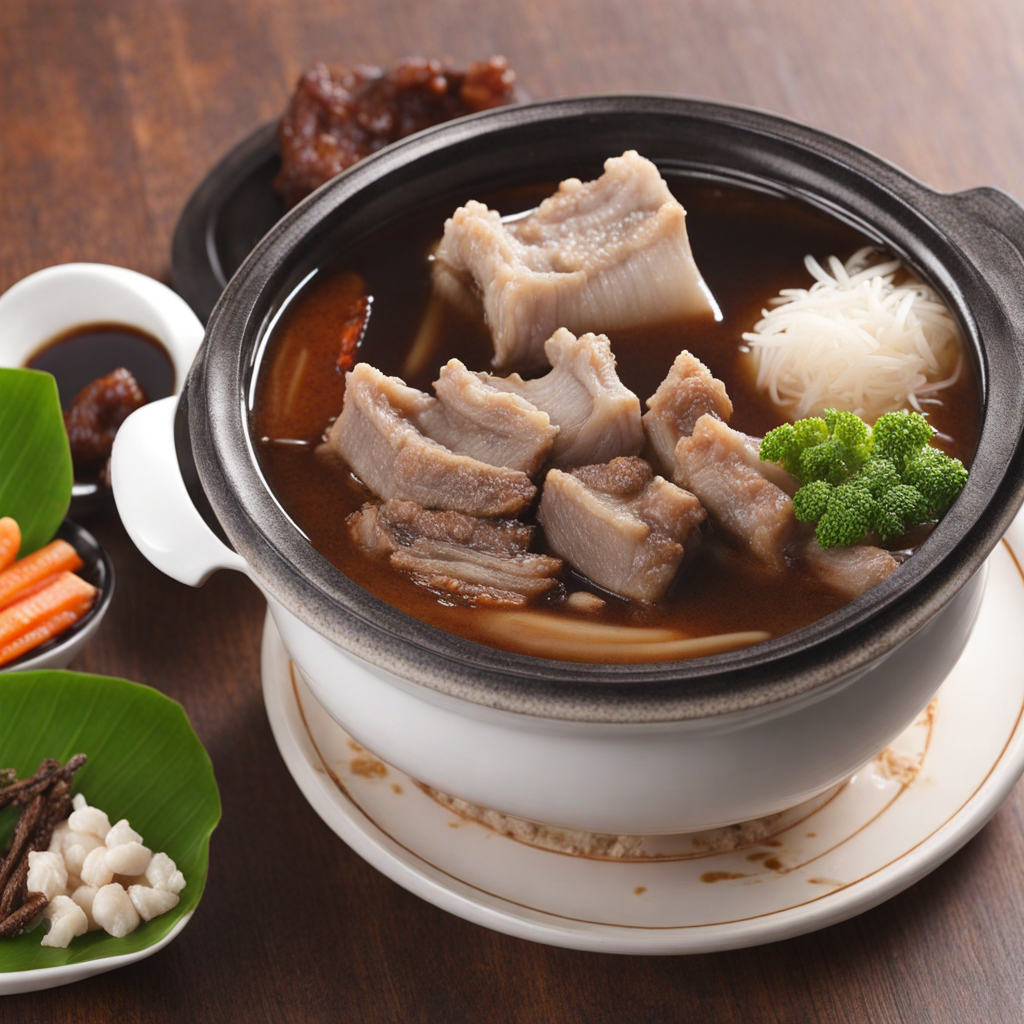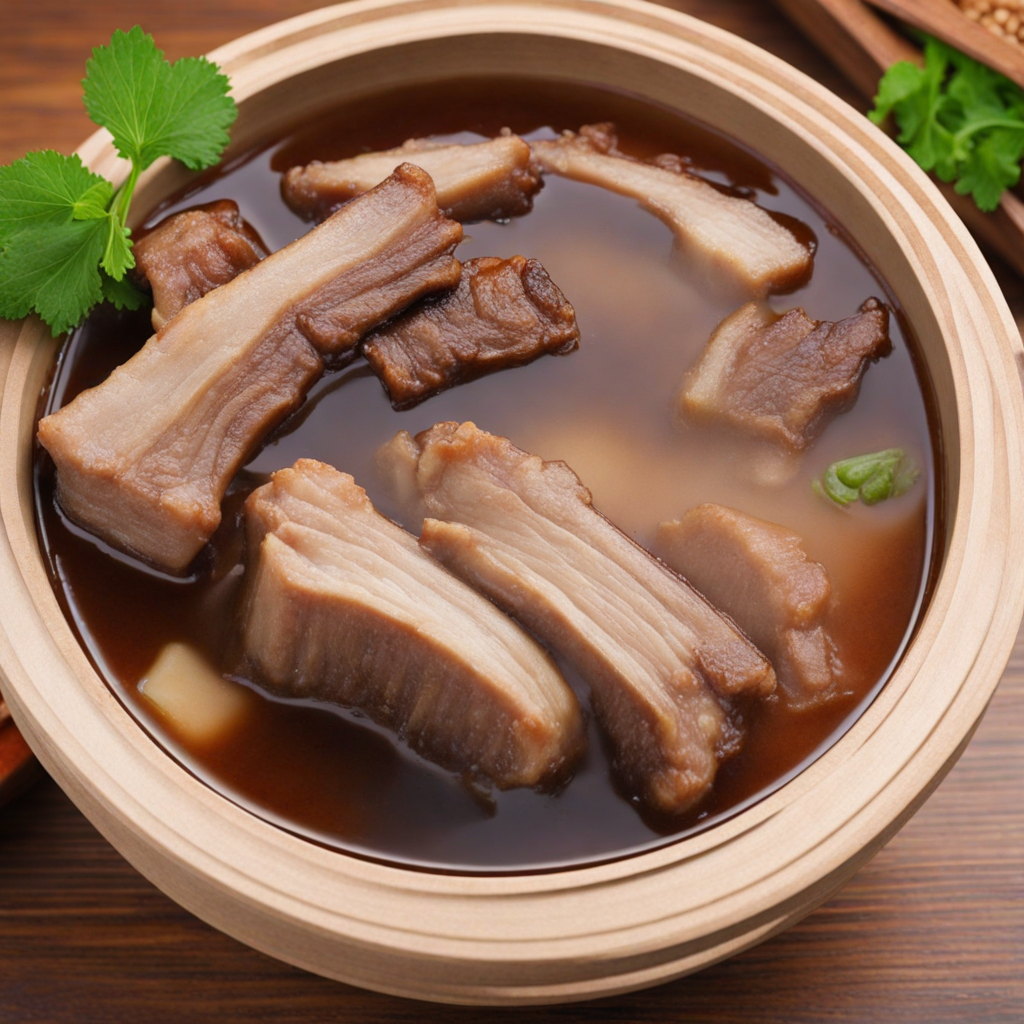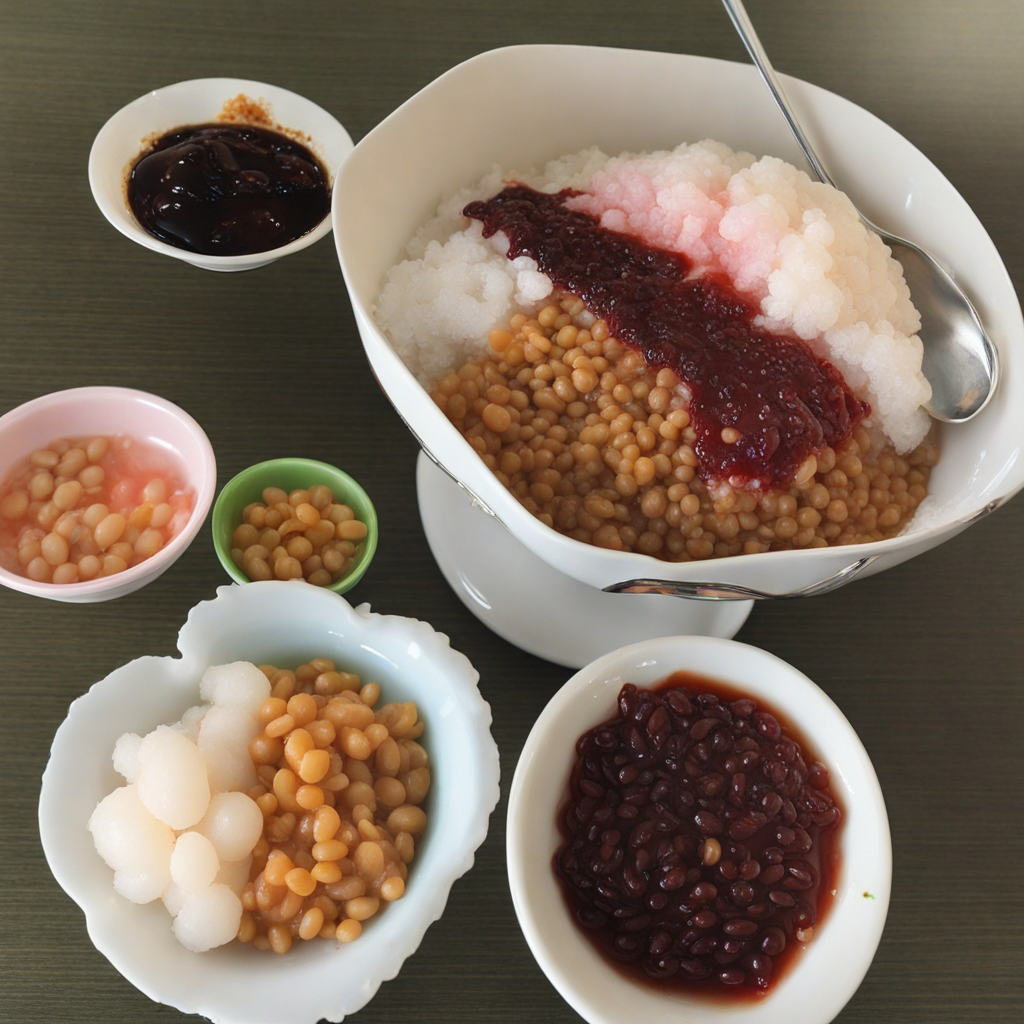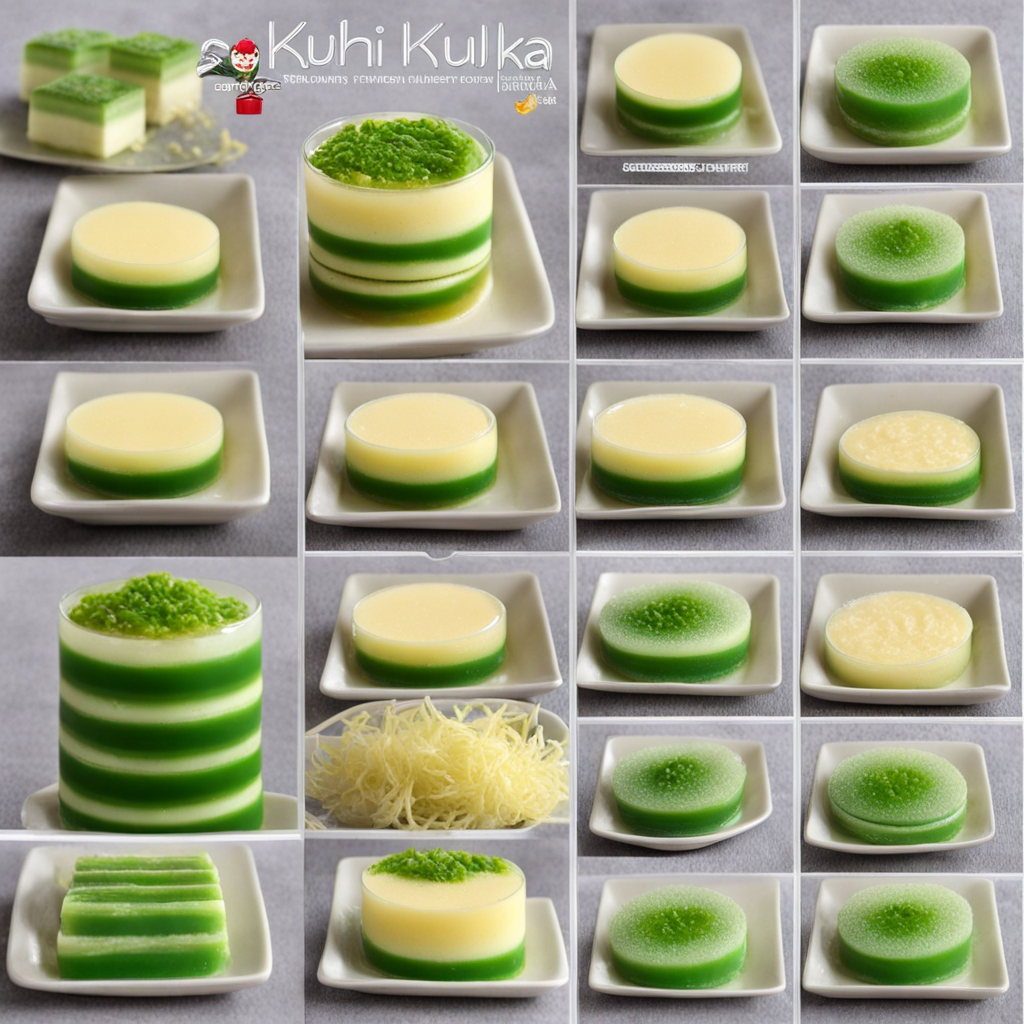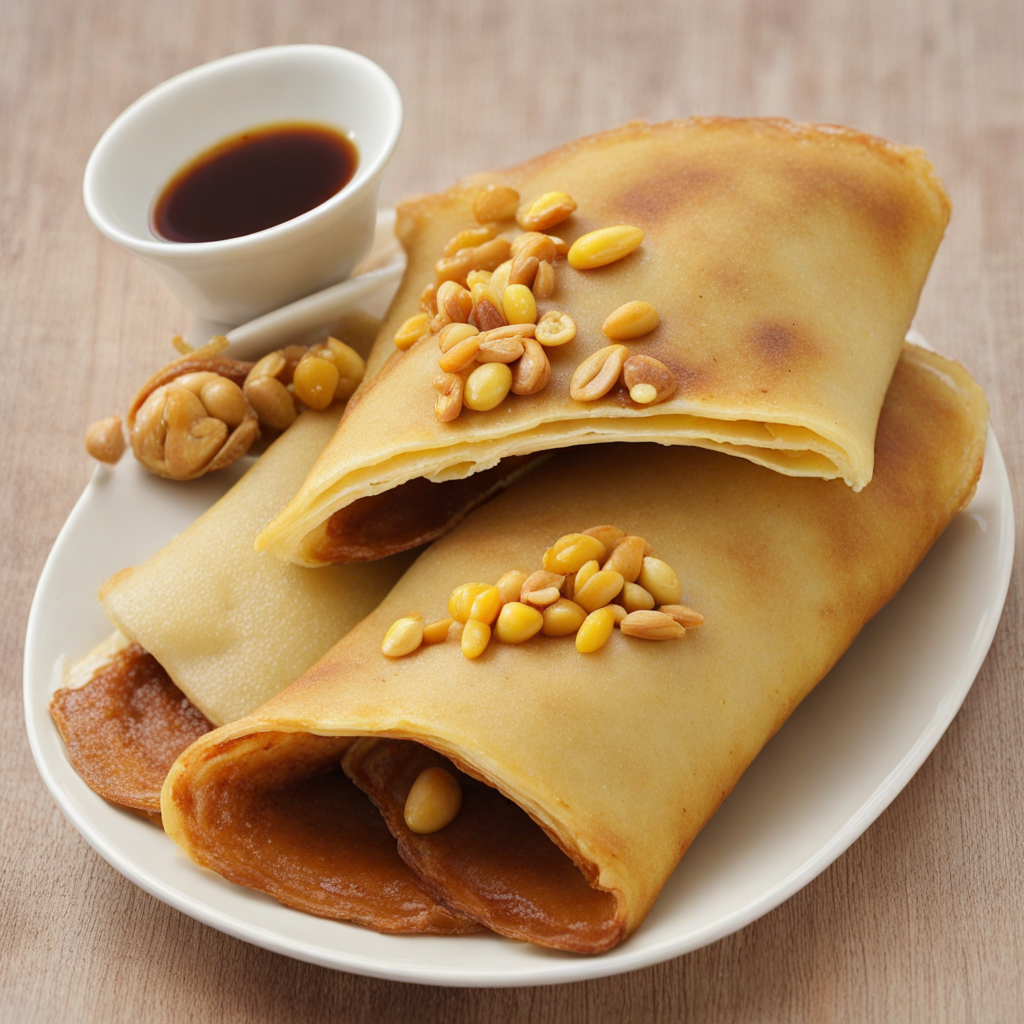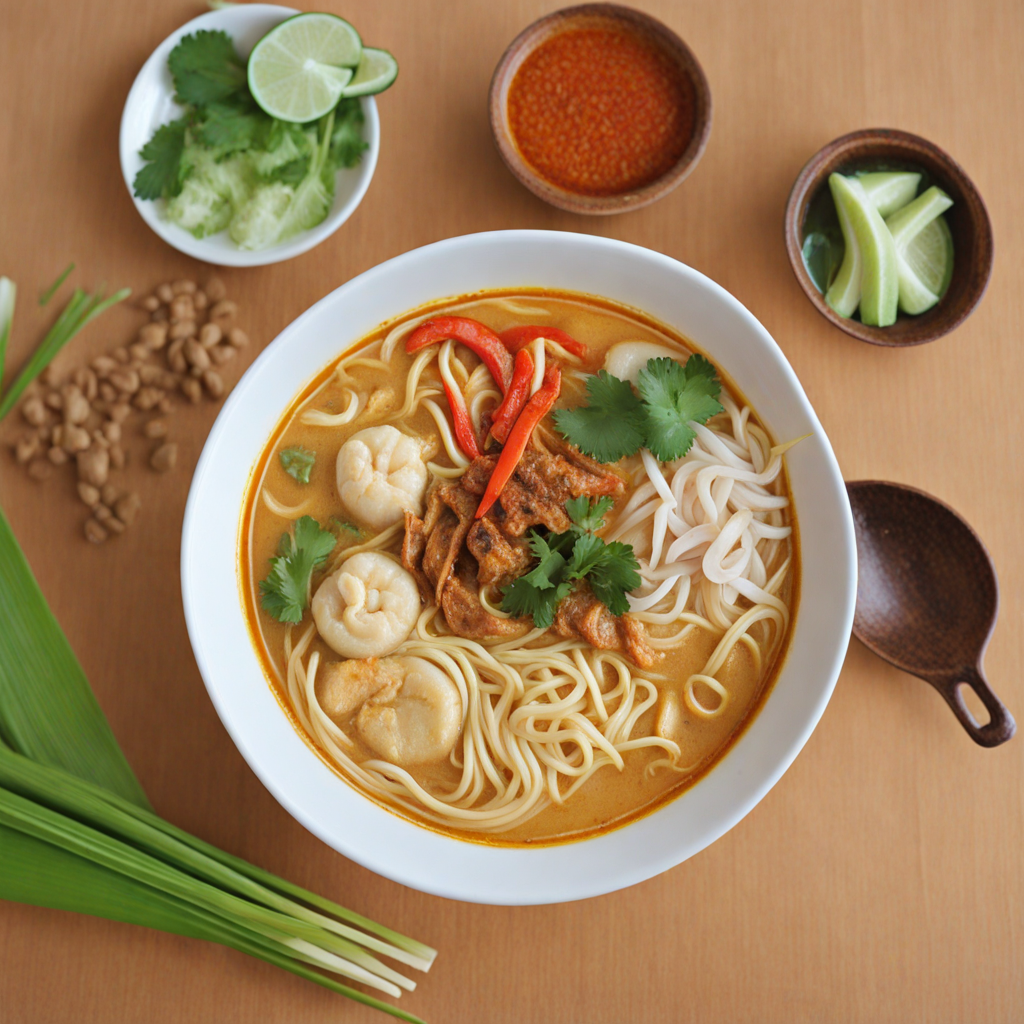Bak Kut Teh
Bak Kut Teh is a fragrant and hearty soup originating from Malaysia, renowned for its unique blend of herbs and spices. The name literally translates to "meat bone tea," which reflects its primary ingredients: tender pork ribs simmered in a rich broth. This broth is traditionally infused with a variety of aromatic herbs, including star anise, cinnamon, garlic, and a blend of Chinese medicinal herbs, creating a complex flavor profile that is both savory and slightly sweet. The long, slow cooking process allows the flavors to meld beautifully, resulting in a comforting dish that warms both the body and soul. Served steaming hot, Bak Kut Teh is often accompanied by rice or youtiao (Chinese dough fritters), which are perfect for soaking up the flavorful broth. The dish can be enjoyed with an assortment of side condiments, such as soy sauce, chili paste, and fresh coriander, allowing diners to customize their experience. Variations of Bak Kut Teh exist, with some regions favoring a darker, soy-sauce-based version, while others lean towards a lighter, peppery broth, showcasing the diversity of flavors within Malaysian cuisine. Bak Kut Teh is not just a meal; it's a cultural experience that is often enjoyed in a communal setting, bringing friends and family together. The dish is typically served in large clay pots at restaurants, encouraging sharing and interaction. As you savor each spoonful, you'll discover the tender, fall-off-the-bone meat that absorbs the fragrant herbal notes, making each bite a delightful exploration of taste. Whether you're a seasoned foodie or a curious newcomer, Bak Kut Teh promises a memorable culinary journey that encapsulates the essence of Malaysian flavors.
How It Became This Dish
The Rich History of Bak Kut Teh: A Malaysian Culinary Treasure Bak Kut Teh, a beloved dish in Malaysia, is more than just a bowl of herbal broth and tender meat; it is a culinary symbol of the country's rich cultural tapestry. The name literally translates to "meat bone tea," and it succinctly describes the dish's basic components: pork ribs simmered in a fragrant broth of herbs and spices. While its origins are often debated, the dish's significance in Malaysian culture and its evolution over time paint a fascinating story of migration, culinary fusion, and community. #### Origins: A Tale of Migration The genesis of Bak Kut Teh is rooted in the 19th century, during the wave of Chinese immigration to Malaysia, particularly the Hokkien and Cantonese communities. These migrants sought better opportunities and brought with them their culinary traditions. The dish is believed to have originated in the port city of Klang, which served as a landing point for many Chinese immigrants. One popular theory suggests that Bak Kut Teh was created as a hearty meal for coolies—laborers who worked in the tin mines and rubber plantations. The broth was not only nourishing but also served as a remedy to combat fatigue. It was typically made using inexpensive cuts of pork, which were easily accessible to these laborers. The inclusion of various herbs, such as star anise, cinnamon, and garlic, not only enhanced the flavor but also provided health benefits, making it a practical choice for those engaged in strenuous work. #### Cultural Significance Bak Kut Teh holds a special place in the hearts of Malaysians, transcending its humble beginnings to become a dish that embodies communal ties and familial bonding. It is traditionally enjoyed as a breakfast or lunch meal, often served alongside rice and a selection of side dishes such as pickled vegetables, fried tofu, and youtiao (Chinese crullers). The dish's cultural significance is further amplified during festive occasions and family gatherings, where it symbolizes unity and togetherness. In many households, it is customary to prepare Bak Kut Teh on weekends or during family reunions, allowing families to come together over a warm, comforting meal. The communal aspect of sharing a pot of Bak Kut Teh fosters conversations and strengthens familial bonds, making it a staple of Malaysian social life. #### Variations and Adaptations As Bak Kut Teh proliferated across Malaysia, it underwent various adaptations, reflecting the diverse cultural influences within the country. The two main styles of Bak Kut Teh—Hokkien and Cantonese—exemplify these variations. 1. Hokkien Style: This version is characterized by a darker, soy sauce-based broth that is richer and slightly sweeter. It often includes a variety of meats such as pork ribs, belly, and even offal. The Hokkien style is particularly popular in Penang and Klang, where it has become a culinary staple. 2. Cantonese Style: In contrast, the Cantonese version features a lighter, herbal broth made with a medley of traditional Chinese herbs. It typically emphasizes the natural flavors of the meat and is often prepared with a more delicate touch. This style is prevalent in Kuala Lumpur and among communities that have maintained close ties to Cantonese culinary traditions. Additionally, variations have emerged that cater to specific dietary needs, including vegetarian and halal versions, which substitute the pork with mushrooms or chicken, respectively. These adaptations have allowed Bak Kut Teh to remain relevant and accessible to a broader audience, showcasing its versatility as a dish. #### Modern Popularity and Global Recognition In recent years, Bak Kut Teh has seen a surge in popularity, not only within Malaysia but also internationally. As food tourism flourishes, travelers are increasingly seeking out authentic culinary experiences, and Bak Kut Teh has emerged as a must-try dish. The rise of social media has further amplified this trend, with food bloggers and influencers sharing their experiences and recommendations, leading to a growing appreciation for the dish beyond Malaysian borders. Restaurants specializing in Bak Kut Teh have proliferated, offering an array of styles and presentations. This commercialization has led to a renaissance of the dish, with chefs experimenting with modern techniques while staying true to traditional flavors. Some establishments even offer variations that incorporate fusion elements, such as spicy renditions or innovative pairings with craft beers. #### Conclusion: A Culinary Heritage Bak Kut Teh is more than just a dish; it is a testament to Malaysia's rich multicultural heritage. Its journey from a laborer's meal to a celebrated culinary icon reflects the stories of resilience, adaptation, and community that are woven into the fabric of Malaysian society. As it continues to evolve and capture the hearts of new generations, Bak Kut Teh remains a flavorful reminder of the past, a bridge between cultures, and a symbol of shared experiences. Whether enjoyed in a bustling hawker center or a family kitchen, Bak Kut Teh encapsulates the essence of Malaysian dining—diverse, communal, and deeply rooted in tradition. As the world continues to discover this beloved dish, it stands as a proud emblem of Malaysia’s culinary identity, inviting all to savor its rich history and flavors.
You may like
Discover local flavors from Malaysia


